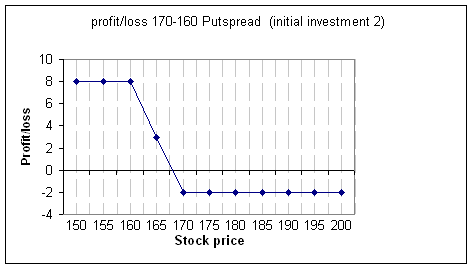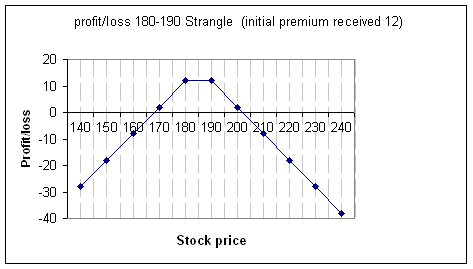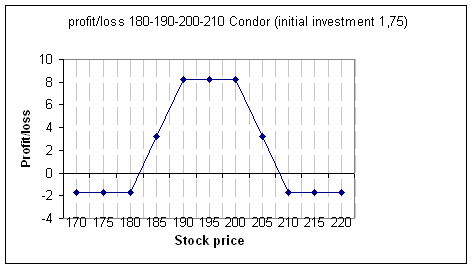| Home | Indicators | Options | Option strategies | Futures | System trading | links | contact | Economic Calender | EXPIRATIEKOERS AEX |
Option Strategies |
|
For the explanation of the option strategies any kind of stock or index can be used, but always be aware of the difference of American and European options. Also check the contract size of the options. Mostly it is 100. So when buying an option for 1.25 you have to pay 125 dollar. For our strategies we made use of Google options with hypothetical option prices. If you expect a very big movement: Buy out of the money options, since they have the most leverage. The reason out of the money options have the most leverage is pretty simple. The value of out of the money options is relatively low. That's why the potential loss is limited. However the option value can rise very quickly once the value of the underlying stock starts rising towards or even above the strike price (in case of call options). So with very little investment you can have the same potential profits as having the underlying stock. Of course this only works with big movements in stock prices. Graphical display at expiration of buying a 200 call option in Google.
Graphical display at expiration of a 170 put option in Google.
If you expect a small movement upwards: Buy a call spread Owners of a call spread limit the potential profits by selling a call with a higher strike price. Because of the premium received the initial investment is lower. Since you don't expect a very big movement the benefit of a lower initial investment outweighs the limitation of the upwards potential. Graphical display at expiration of a 190-200 call spread in Google.
: If you expect a small movement downwards: Buy a put spread Buying a put spread means limiting your downward potential in exchange for a lower initial investment.
If you expect no movement or very little movement You can write a single option, strangle or straddle. Other constructions that profit from little movement and have a limited risk are butterflies and condors. Writing a put option Always be aware of the risk involved in selling options. When selling a put option your maximum profit is the premium you receive. The potential loss is limited to a stock value of zero. In our example we write a 170 put for 4 dollar. The potential profit is 400 dollar, but the potential loss is 16.600 dollar. When selling options please make sure to cut your losses in time. Writing the 170 put option with a premium of 4 dollar would give the following graph at expiration:
Writing strangle As mentioned above the risk of writing a strangle is unlimited when prices are rising and limited to a stock price of zero when prices are going down. Writing the 180 put option and the 190 call option (strangle) with a premium of 12 euro would give the following graph:
Butterfly A butterfly is buying one call spread and selling the call spread above. For example buying the Google 180-190 call spread and selling the 190-200 call spread. The profit is limited to the strike interval minus invested premium. You can maximum loose your invested premium. The graphical profit/loss display on expiration below:
Condor A condor is based on the same principle as the butterfly. In this case you buy the 180-190 call spread and sell the 200-210 callspread. This way you invest a little more money but the change you earn the maximum 10 dollar is bigger. Graphical display with an initial investment of 1.75:
|







